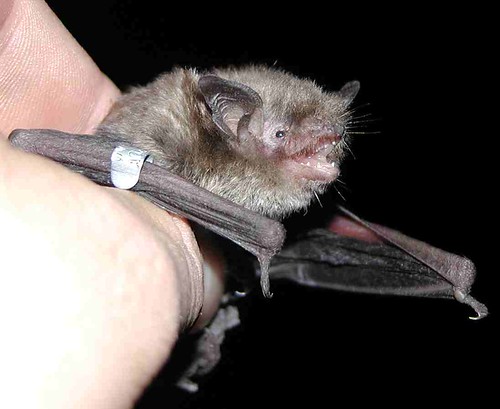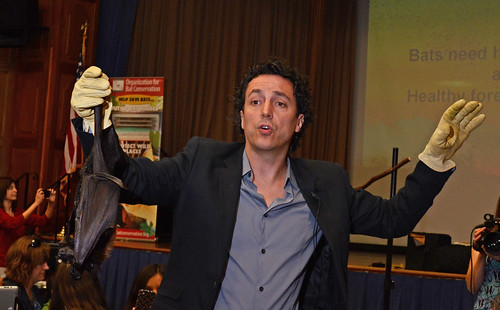
Synonymous with a superhero signal in the sky and silhouettes hanging upside down in a darkened cave, bats inspire a long-standing fascination, and with good reason: Bats are vital to healthy ecosystems and human economies world-wide.
With Halloween upon us and many people believing bats are creepy, the U.S. Forest Service wants to raise awareness about these mysterious and often misunderstood animals. For example, bats consume up to their body weight in insects every night, including agricultural and forest pests, thus reducing the need for chemical pesticides.
Almost a third of the world’s 1,200 species of bats feed on the fruit or nectar of plants. In return for their meals, these bats are vital pollinators of countless plants and essential seed dispersers with a major role in regenerating rainforests.
A recent study indicated the economic benefit to U.S. farmers from bat predation on insects is about $23 billion per year. The 20 million bats that live in Bracken Cave north of San Antonio, Texas, eat 250,000 pounds of insects every night.
Bats also play a significant role in science and medicine. Research on bats has enabled advancement in sonar and radar as well as the development of a drug to treat stroke patients.
“Many people fear vampire bats, but they don’t realize the drug Draculin, a blood thinner used to treat strokes, is derived from the enzyme desmodeplase, which is found in vampire bat saliva,” said Dennis Krusac, a Forest Service bat biologist.
Bats are critically important, but there is a major problem. Global bat populations have been declining for decades due to disturbances by people, carelessly used pesticides, and habitat loss. Since 2006, white-nose syndrome, affecting hibernating bats at alarming rates, has killed 5.7 million bats in the eastern U.S. and Canada.
A white fungus, Pseudogymnoascus destructans, grows on bat noses, giving the disease its name, and on other hairless parts of their bodies. The syndrome causes bats to use up their fat reserves rapidly during hibernation. Affected bats fly out of caves during winter in an attempt to find food. Since the insects that bats eat are seasonally dormant, the bats die of starvation. The most threatened are bat populations that hibernate in large colonies.
There are ways for you to make a difference to help bats:
- Plant a bat garden. If you live in the desert southwest plant flowers that are late day or evening bloomers.
- Build and install a bat house to replace habitats that have disappeared.
- Adhere to cave closures; if caves are open follow caver protocols recommended by the U.S. Fish & Wildlife Service to decontaminate clothes, footwear, and equipment used in caves or mines.
- Stay out of caves when bats are present.
- Report bats showing signs of white-nose syndrome.
- Teach your children about the benefits of bats. The Forest Service offers a distance learning adventure at BatsLIVE!
“Our ecosystem restoration projects are extremely important to bats because bats need healthy forests, and healthy forests need bats,” Krusac said. Click here to watch a video about the importance of bats to American agriculture.
Editors’ note: Bat Conservation International and BatRescue.org contributed information to this blog.

